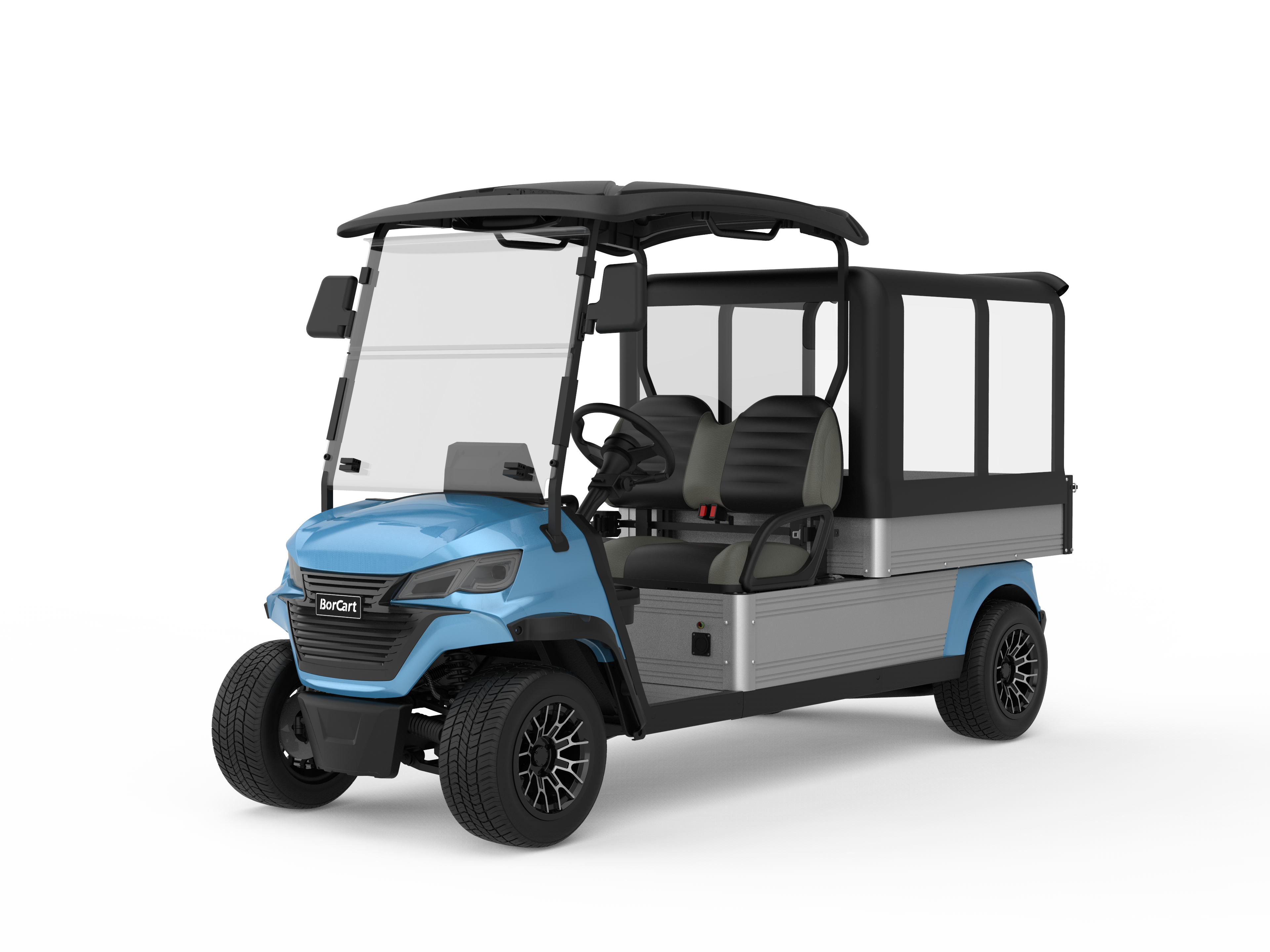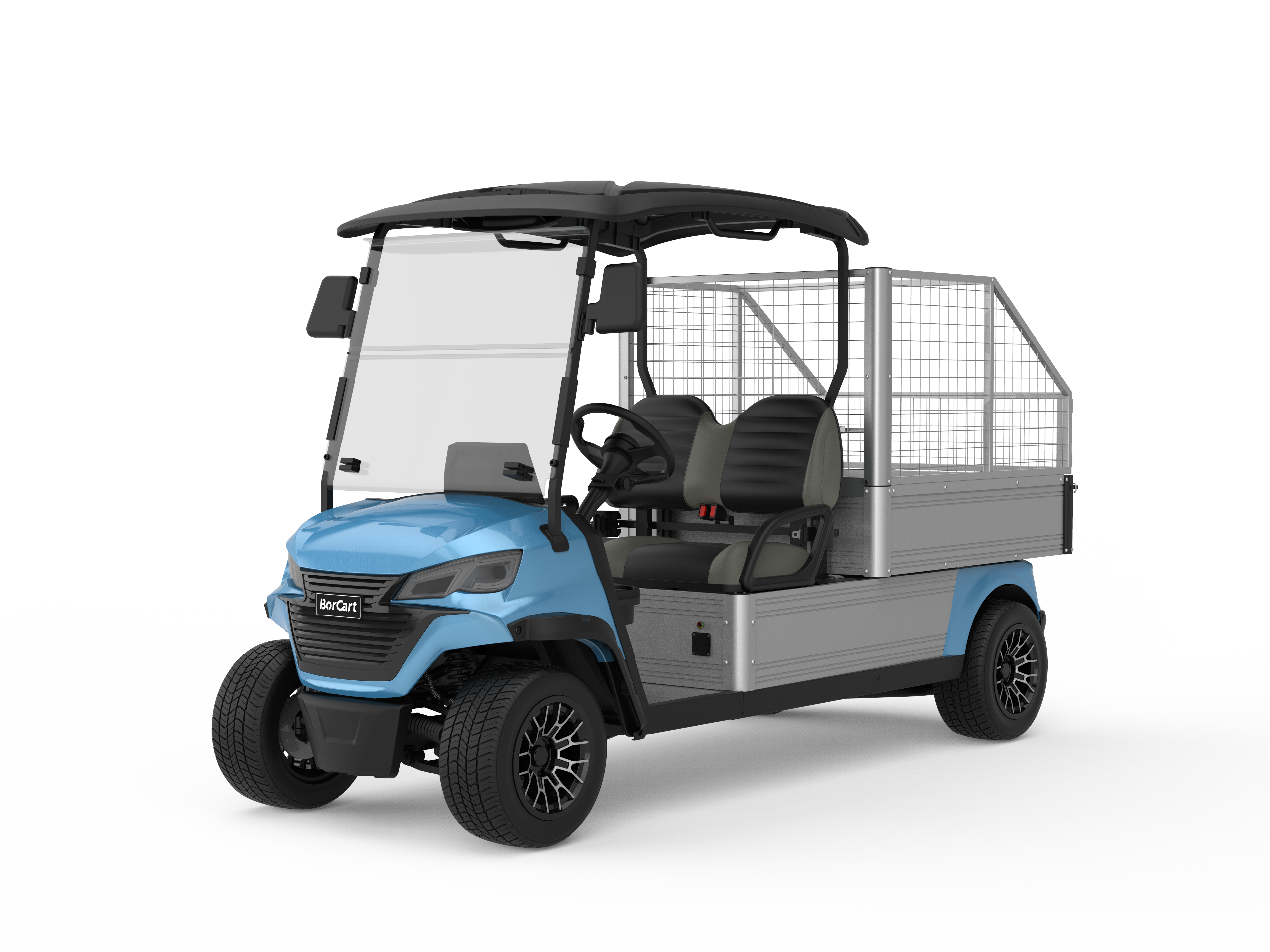Borcart Utility Vehicle
 Utility Vehicles (also known as multi-purpose vehicles) are designed specifically for performing certain tasks or jobs, featuring high practicality, versatility, and adaptability. They are widely used in agriculture, construction, logistics, military operations, and personal outdoor activities.
Utility Vehicles (also known as multi-purpose vehicles) are designed specifically for performing certain tasks or jobs, featuring high practicality, versatility, and adaptability. They are widely used in agriculture, construction, logistics, military operations, and personal outdoor activities.
1. Core Definition and Characteristics
Function-oriented design
Utility Vehicles (UVs) focus on practicality and usually have the following features: Cargo capacity: such as flat cargo boxes, open cargo beds or enclosed cargo compartments, used for transporting tools, equipment or materials.
Off-road performance: high ground clearance, wear-resistant tires, suitable for rough terrain.
Modular configuration: additional attachments such as snow shovels, weed trimmers, and lifting arms can be added to meet diverse needs.
Power type: fuel-powered: traditional gasoline or diesel engines, providing high torque and long range, suitable for heavy loads or remote areas.
Electric power: zero emissions, low noise, suitable for indoor or environmentally strict scenarios (such as warehouses, campuses).
Hybrid power: combining the advantages of fuel and electric to balance range and efficiency.
Classification system by purpose: agricultural vehicles (such as tractors), construction vehicles (such as loaders), logistics vehicles (such as electric forklifts).
By structure: UTV (Utility Task Vehicle): side-mounted double seats, emphasizing maneuverability and cargo capacity, often used on farms or for off-road exploration.
SUV (Sport Utility Vehicle): combining the comfort of a sedan with off-road performance, suitable for families and light off-road use.
Military/Ammunition vehicles: enhanced protection and mobility, used for battlefield transportation or special missions.
2. Typical Application Scenarios
Agricultural tasks: sowing, fertilizing, harvesting, transporting agricultural products.
Advantages: high ground clearance to avoid crop damage, four-wheel drive system to handle muddy fields, quick replacement of cargo boxes (such as spraying equipment).
Construction and engineering tasks: transporting building materials, digging foundations, site leveling.
Advantages: compact body for flexible movement in construction sites, hydraulic system to drive loading arms or crushers, high load capacity to improve efficiency.
Logistics and storage tasks: indoor and outdoor cargo transportation, order sorting, pallet transportation.
Advantages: electric models are quiet and pollution-free, narrow channel design saves space, can integrate automated navigation systems.
Military and emergency tasks: personnel transportation, material supply, disaster relief.
Advantages: armor protection to resist light weapon attacks, all-terrain passability to break through complex terrain, modular medical cabin for rapid deployment.
Personal and leisure tasks: hunting, fishing, off-road exploration, estate maintenance.
Advantages: UTV models offer an open driving experience, can carry camping equipment or hunting tools, some models are equipped with GPS and night vision functions.
3. Technological Development Trends
Drivers of the electric transformation: strict environmental regulations, decreasing battery costs, and improved charging infrastructure.
Post time: Sep-09-2025








